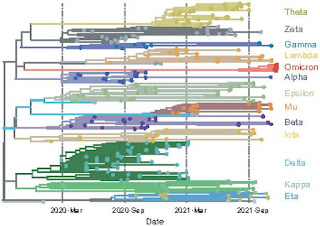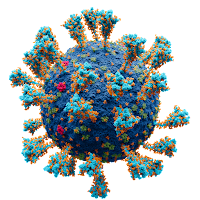The Omicron wave is surpassing all records for the number of cases in Ontario. The province has given up on testing for most people so the actual case counts are far higher than the reported cases and it's unlikely that the numbers are dropping in spite of what the graph (below) might suggest. Judging by what's going on in other countries, the peak is still a week or two away.
Ontario residents have been very good about getting vaccinated. As of today, 88% of eligible people over the age of 12 have been fully vaccinated and 91% have received at least one dose. The 5-11 age group became eligible about six weeks ago and so far 45% have had one shot. This places Ontario (and the rest of Canada) among the most vaccinated places in the world.
Since the unvaccinated population is only 10% of the total, this means that most of the cases are among the fully vaccinated population and most of those cases are mild or asymptomatic. Fully vaccinated people are also getting infected in other countries but the effect is often masked by a large number of cases among the unvaccinated population. This can deceive people into believing that you don't need to worry if you are fully vaccinated.
About 30% of eligible people have received a booster shot and that group is not reporting significant numbers of infections consistent with the data showing that a recent booster will protect you from gettng even mild forms of COVID-19.
It's pretty clear that the Omicron variant is being spread by people who are fully vaccinated with no booster. They may have mild symptoms but they can infect others, including young children and the elderly, who can suffer more severe symptoms.
The number of people in hospital with COVID-19 is rising sharply but so far it's still less than the numbers in the Delta wave last Fall. That's expected to change rapidly over the next few days and there's a great danger that the health care system will be overwhelmed. The best guess so far is that we will just scrape by by cancelling all elective surgeries and restricting the number of non-COVID patients who get admitted to hospital. Other countries may not be so lucky.
Given the high levels of vaccination, you might suspect that most of the people in hospital will have been fully vaccinated and that's exactly what we see. 71% of the COVID-19 patients in the hospitals have been fully vaccinated but this number is slightly misleading since it includes patients who were admitted for other reasons and subsequently tested positive for COVID-19. Those people aren't necessarily being treated for severe COVID symptoms.
It's hard to get an accurate number for the hospitalization rate because we don't know how many cases there are but it looks like that number is below 1%. This means that, on average, fewer than one patient will end up in hospital for every 100 who get COVID-19. This rate is far below the overall rate of 3.9% since the pandemic began and about 2% for the Delta wave when a substantial percentage of the population was vaccinated. It's data like this that suggest that the Omicron variant causes a milder form of COVID-19 but the data is confounded by the fact that fully vaccinated people are now getting infected whereas they still had substantial serum antibody levels during the Delta spike. I'd like to know what the hospitalization rate (and the death rate) was for unvaccinated people last year and what it is now.
The unvaccinated group makes up only 24% of the hospitalized patients but 49% of those in the intensive care units (ICU). This is clear evidence that vaccination offers significant protection against severe forms of the disease—that's exactly what vaccines are supposed to do. However, it's worth noting that 51% of the patients in the ICUs are either fully or partially vaccinated. You can still get a serious case of COVID-19 if you are fully vaccinated. As with the case numbers, this severe outcome will not be obvious in countries with lower vaccination rates and that could be a problem if you are trying to stop the spread.





















